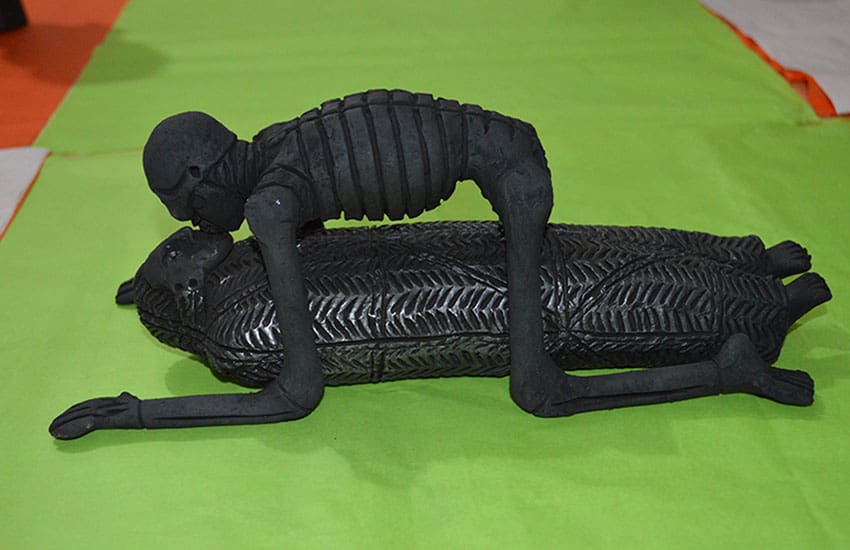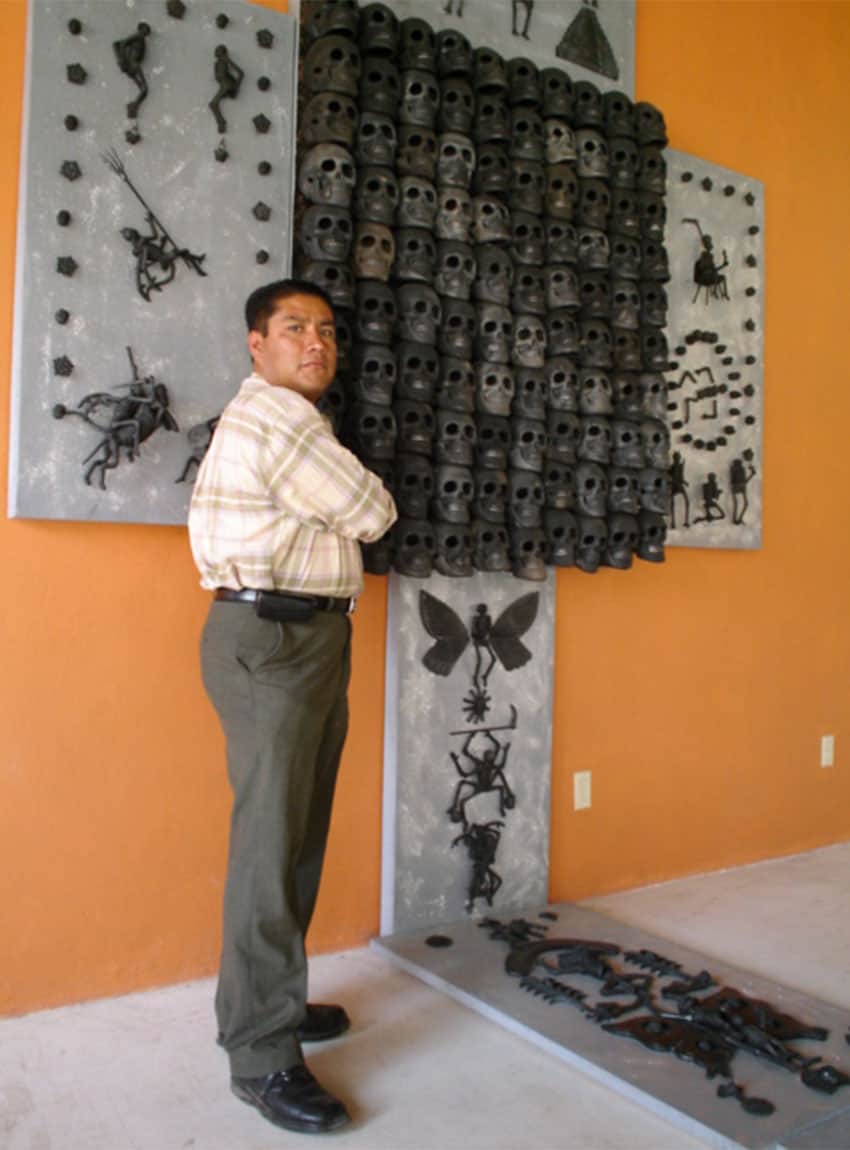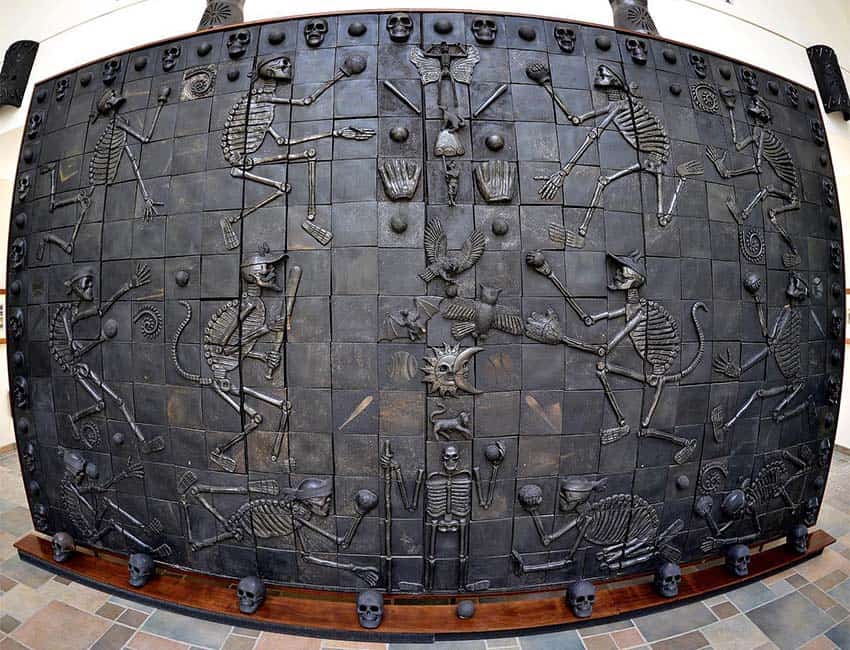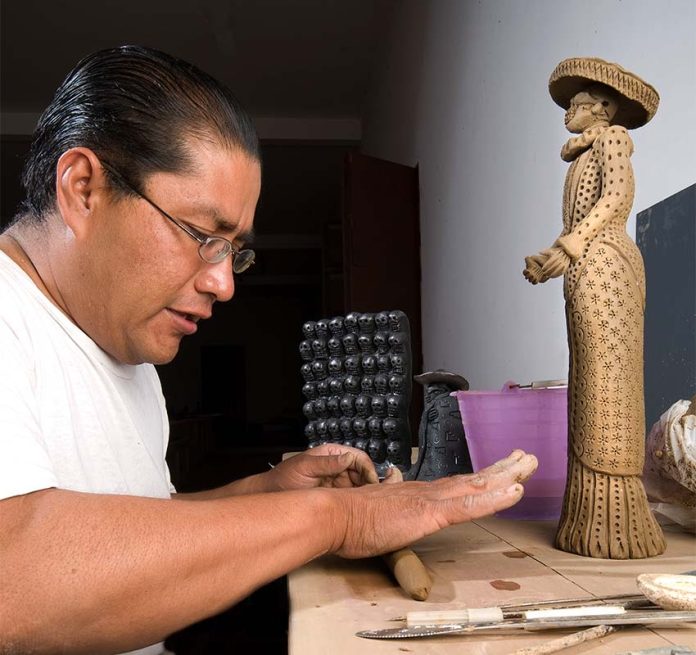Mexico’s handcraft tradition is so much more than eye-catching wares displayed for sale on the street. Rather, it is a testament to millennia of both history and aesthetic evolution.
Mexico’s best artisans do not simply have impeccable craftsmanship, but they are artists in their own right.

Artists need a nurturing environment, and the central valleys of Oaxaca certainly fit the bill. The region is home to multiple cultures, along with outstanding handcraft and fine art traditions. It also has a large cultural tourism industry, providing a perfect marketplace for creators.
Among Oaxaca’s many notable creators, Carlomagno Pedro deserves recognition for a lifetime dedicated to breaking the barrier between handcrafts and fine art.
Pedro, born in 1965, is from the town of San Bartolo Coyotepec, made famous in the mid-20th century by Rosa Real Mateo, or Doña Rosa, as she was better known.
She put the town on the map internationally, by learning to burnish the local clay to a shiny black and creating decorative objects called barro negro.

Born in 1965, Pedro is the son of Coyotepec potters, but rather than a biological son of the doña, he is more her artistic heir.
His name means Charlemagne, like the French emperor. Despite his grand name, Pedro is a quiet, unassuming man, happiest when he works with, and talks about clay.
I had the pleasure of meeting him for the first time in 2016 at his workshop in Coyotepec. When I told him that my students and I had created an article about him on Wikipedia, he responded “That was you? I did not know what Wikipedia was, but my grandchildren found the article and were very impressed that I was in it.”
But underneath his humble demeanor is a fire. Leading Mexican folk art expert Marta Turok recounts that he was “a precocious child,” always asking questions and learning about the culture of his region’s culture.
His early training in barro negro was traditional, although his father made (and still makes) figurines. As a child, he began to experiment with the possibilities that the clay represented, and convinced that it had potential, decided to study fine art at the Rufino Tamayo Workshop in Oaxaca city.
That training, along with his innate talent, has resulted in the interpretation of traditional themes of Oaxacan life and death in a much more nuanced way. Many of his works are skeletal figures, but these are not mere Day of the Dead decorations; they are expressions of how Pedro sees the world.

But working with clay did not open doors among Mexico’s artistic elite, certainly not early on in his career. Turok met him around this time and notes that his attempts to participate in fine arts events were rejected until the highly regarded abstract artist Manuel Felguérez chastised his fellow artists for their narrow-mindedness.
Once recognition began, the honors came quickly. By age 25, he was regularly winning awards, including the National Presidency Youth Award, and his work was praised by Francisco Toledo, a fellow Oaxacan and one of Mexico’s greatest sculptors.
In 2014, Pedro received Mexico’s highest honor for artisans, the National Arts Prize (Popular Traditions category), for his work “elevating” Zapotec and Mixtec indigenous cultures. Pedro says that winning the award vindicated all the struggles that he suffered throughout his decades as an artist.
Pedro regularly creates works for museums, fine art galleries and major art collections, but his magnum opus is a 3-by-5-meter mural for the exterior of Oaxaca’s Baseball Academy in Coyotepec, depicting the Mixtec version of the Mesoamerican ballgame, the history of Coyotepec and a portrait of Babe Ruth.
Pedro’s contributions to Oaxacan culture do not stop with pottery. When the state decided to open a folk art museum almost 20 years ago, Coyotepec was chosen as the site and Pedro as its founding (and current) director. The Museo Estatal de Arte Popular de Oaxaca has since sponsored hundreds of exhibitions, cultural events and workshops.
Although the workshop is much larger than that of his parents, it is still a simple affair — four cinder block walls and a roof under which to create the magic, using nothing but his hands and a rudimentary potter’s wheel, consisting of a plate balanced over a bowl, a Mesoamerican technique unique to the region.

Turok sees Pedro’s work and legacy as invaluable to the barro negro tradition of Coyotepec.
“He portrays tradition but in a unique way, one that gives the clay a spirit, showing his fellow artisans another path, that there are many paths to develop the art form.”
Leigh Thelmadatter arrived in Mexico over 20 years ago and fell in love with the land and the culture in particular its handcrafts and art. She is the author of Mexican Cartonería: Paper, Paste and Fiesta (Schiffer 2019). Her culture column appears regularly on Mexico News Daily.
